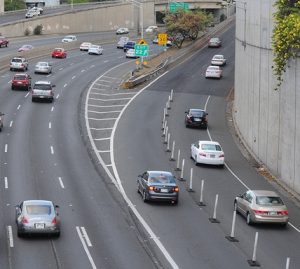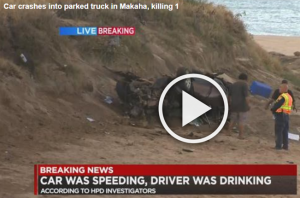Transportation Research
A large portion of the current research in transportation in conducted under CSET. Drs. Guohui Zhang and Panos Prevedouros were awarded $1.6 million for the next five year as part of Center for Safety Equity in Transportation (CSET). The focus of the research is on transportation safety equity for rural, isolated, tribal and indigenous communities (RITI communities.) Please look for projects under the CSET link.
Every improvement to H-1 Freeway done between 2000 and 2014 has been analyzed by Dr. Panos Prevedouros, and several of the changes were built, resulting in major traffic benefits. Part of the past projects can be found here.
CEE faculty have conducted a number of research projects in the area of pavements. Recent and current projects can be found at the Pavements link.
Investigate Traffic Operation Efficiency and Safety Performance of Autonomous Vehicle-enabled Intersection Control Strategies
Dr. Guohui Zhang obtained a 15 month (206-2017) project from the “Safety and Operations of Large Area Rural/Urban Intermodal Systems” University Transportation Center funded by the USDOT and based at the University of Nevada, Reno (about $70,000) to explore new research approaches for autonomous intersection control and arterial management and improve our understanding for efficient, safety, and intelligent traffic systems operations.
Autonomous vehicles can much more accurately judge distances and velocities, attentively monitor their surroundings, and react instantly to situations. Therefore, there is great potential to improve intersection control and arterial management efficiency and safety performance. This study aims to investigate traffic operation efficiency and safety performance at intersections under different control strategies in autonomous vehicle-enabled traffic systems. It can be envisioned that there will be a fairly long transitional period before autonomous vehicles are fully deployed.
Roadway Departure Crashes in Hawaii’s State Roads
Dr. Ricardo Archilla received funding from the Hawaii State DOT and the Federal Highway Administration (about $140,000, from 2016 to 2018) to develop a systemic roadway departure plan for the State of Hawaii. Some of the most important tasks include: quantification of the historical accident records available at the Hawaii Department of Transportation (HDOT) in general and of roadway departure accidents in particular; analysis of countermeasures and costs; identification of risk factors (through the development of statistical models) and potential engineering countermeasures; identification of locations where different safety treatments may be appropriate; and assignment of potential treatments to roadway sections.



